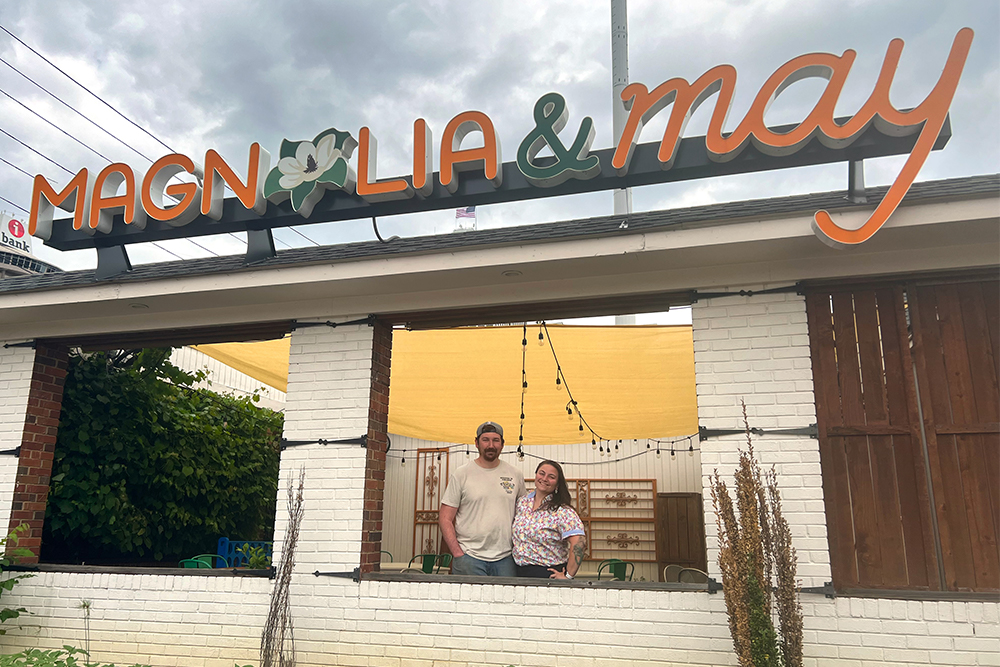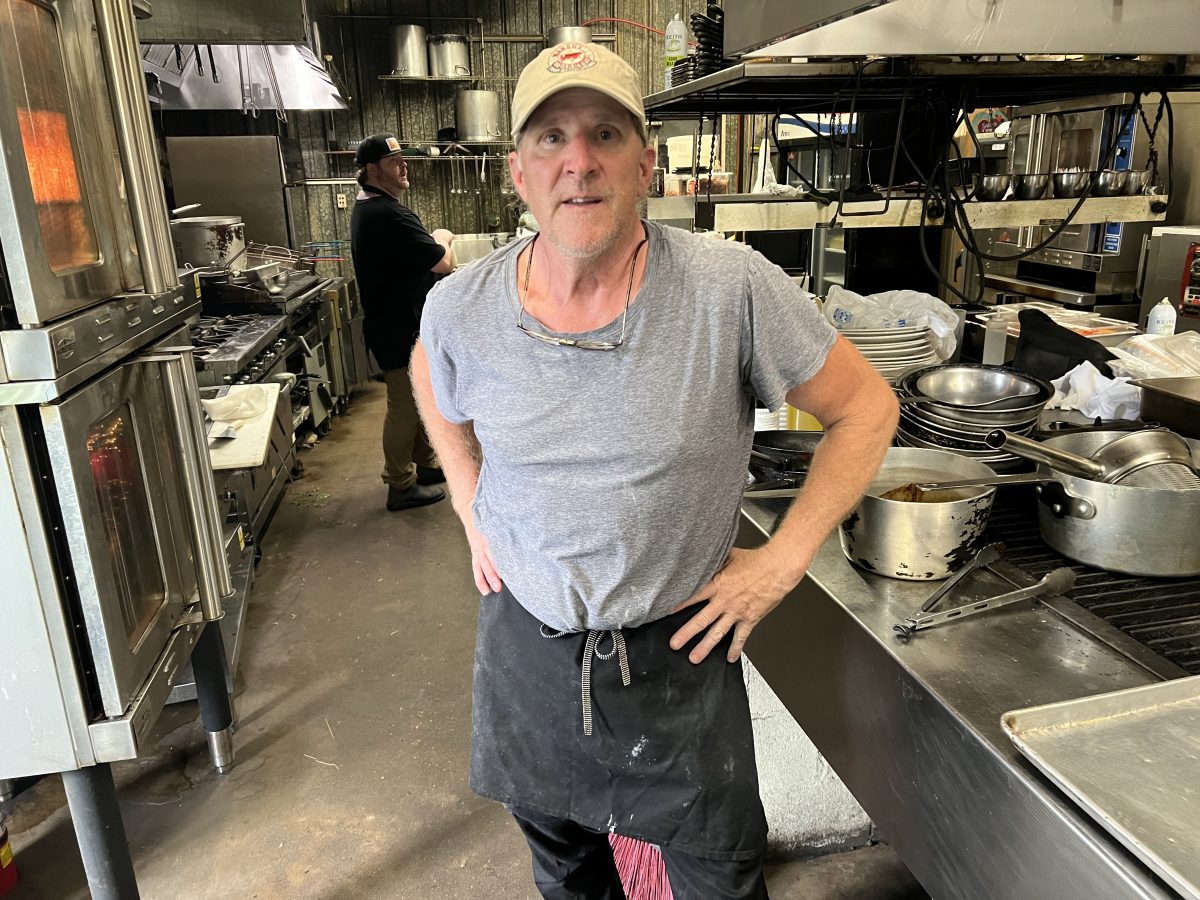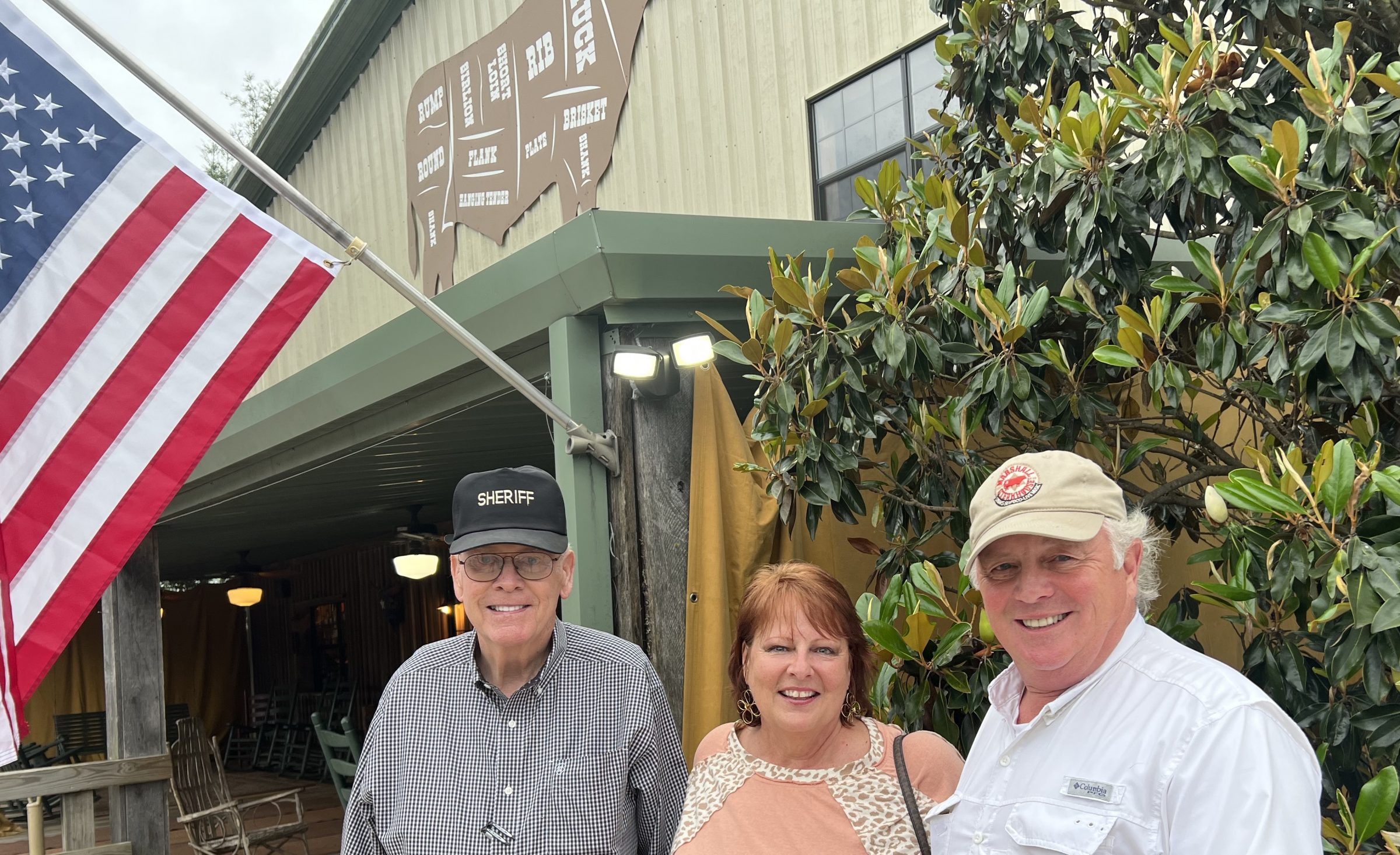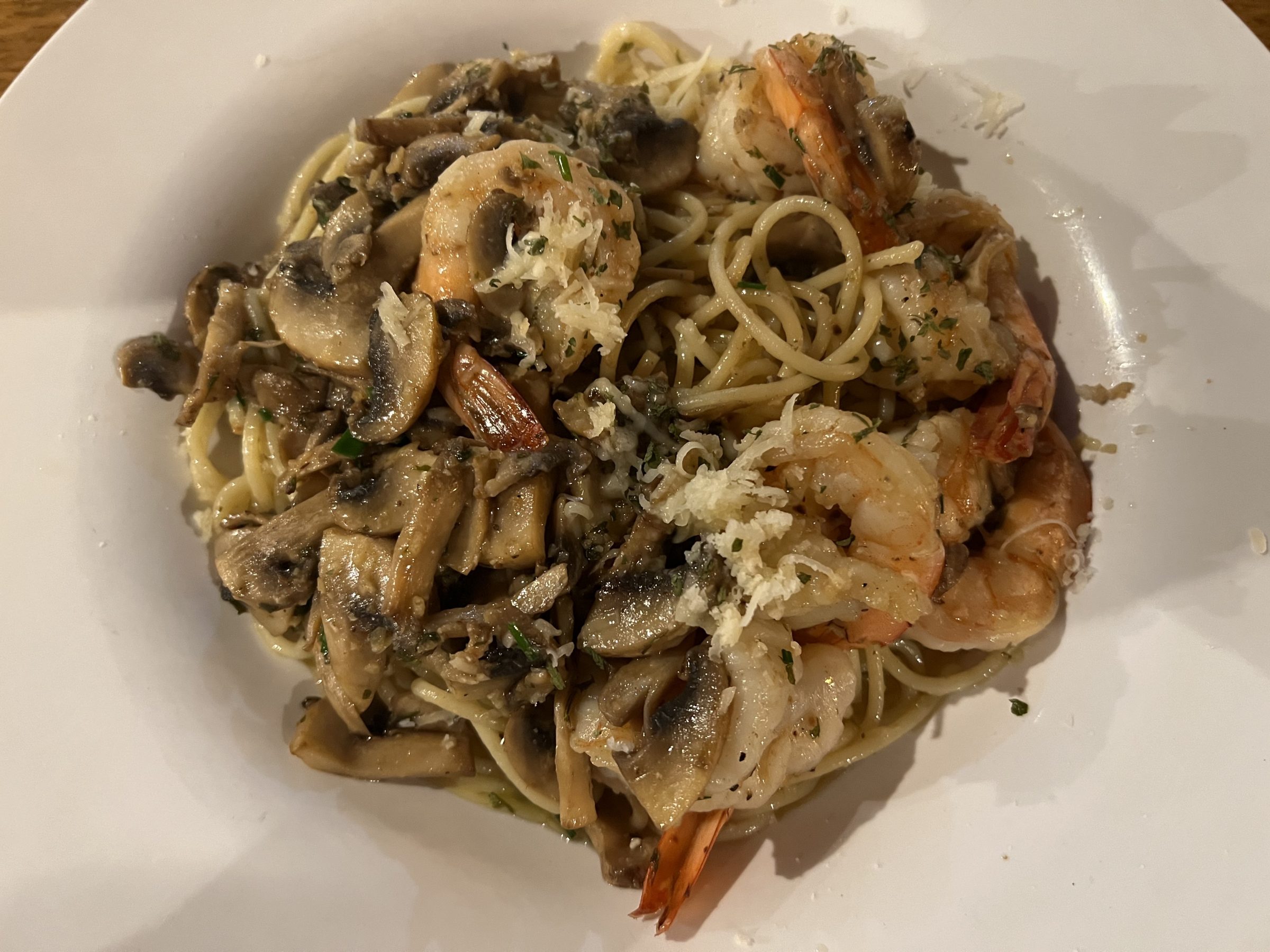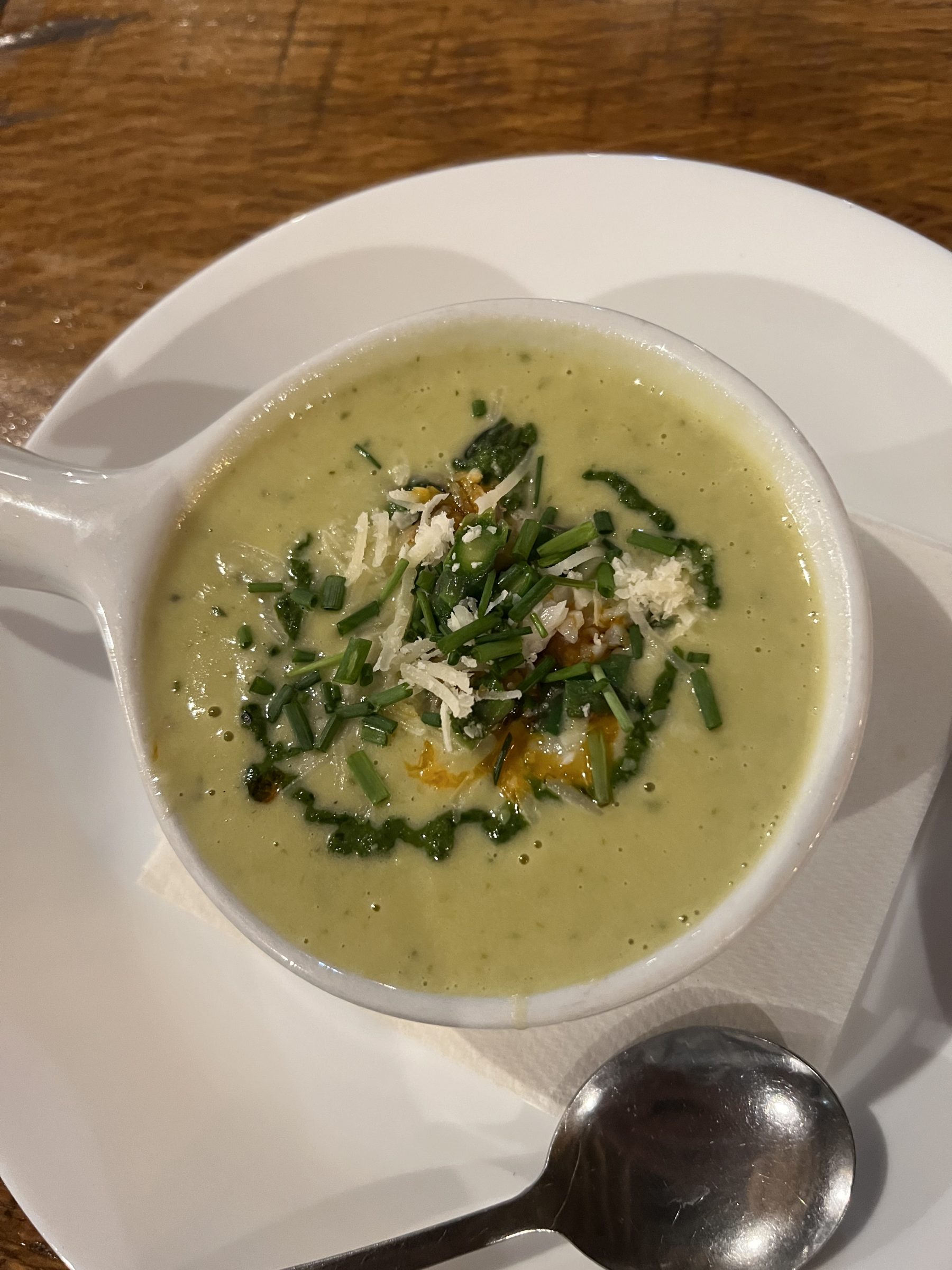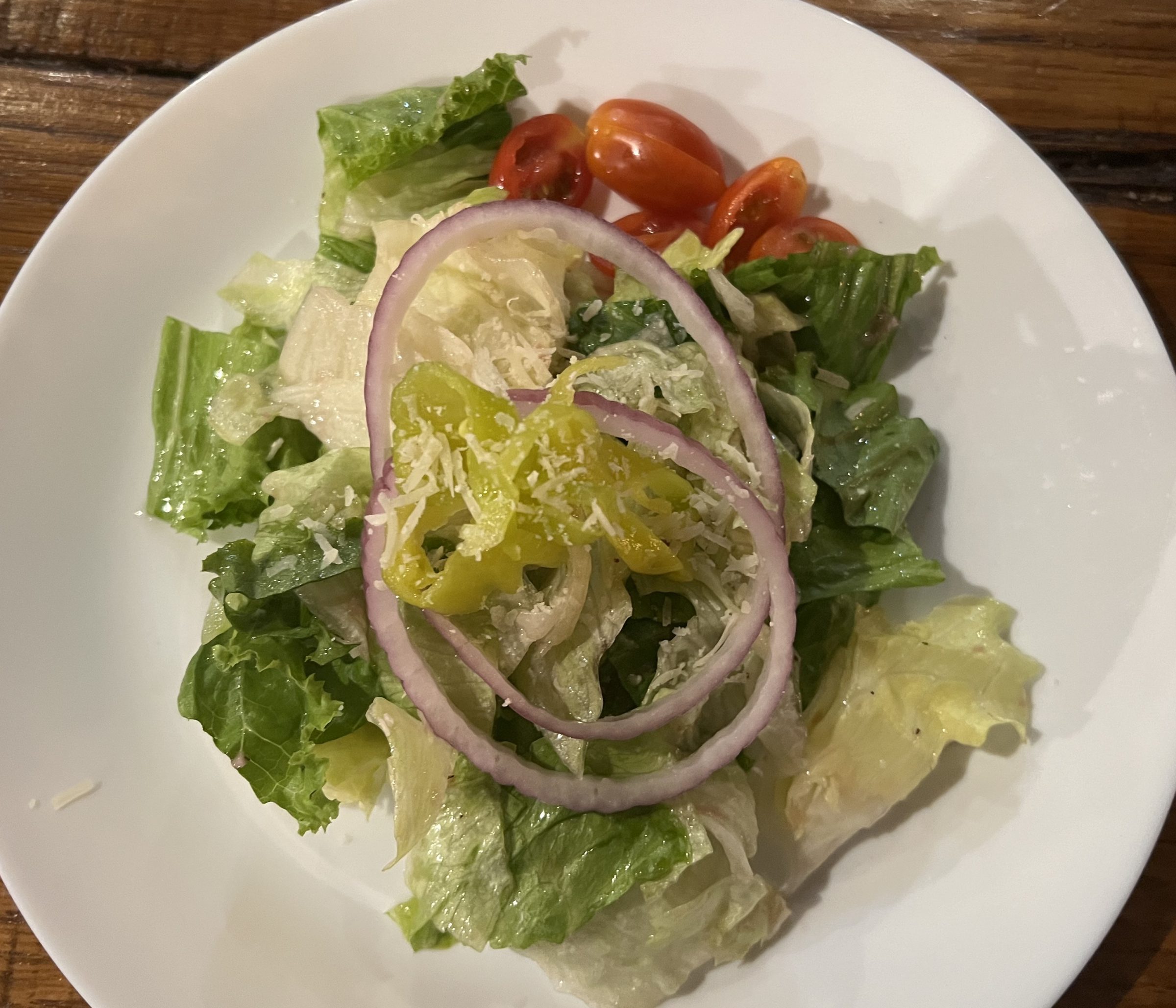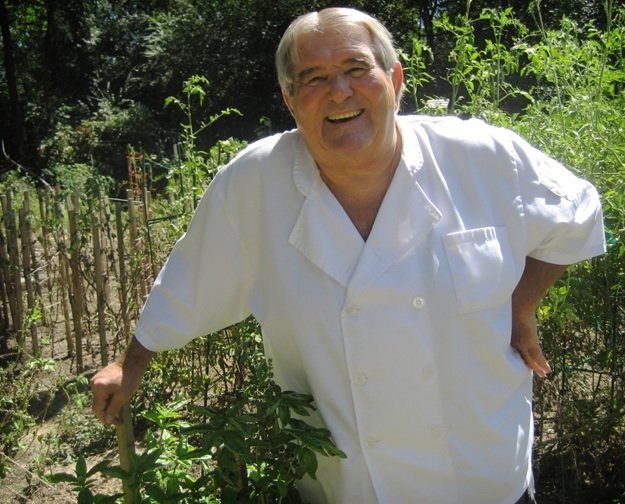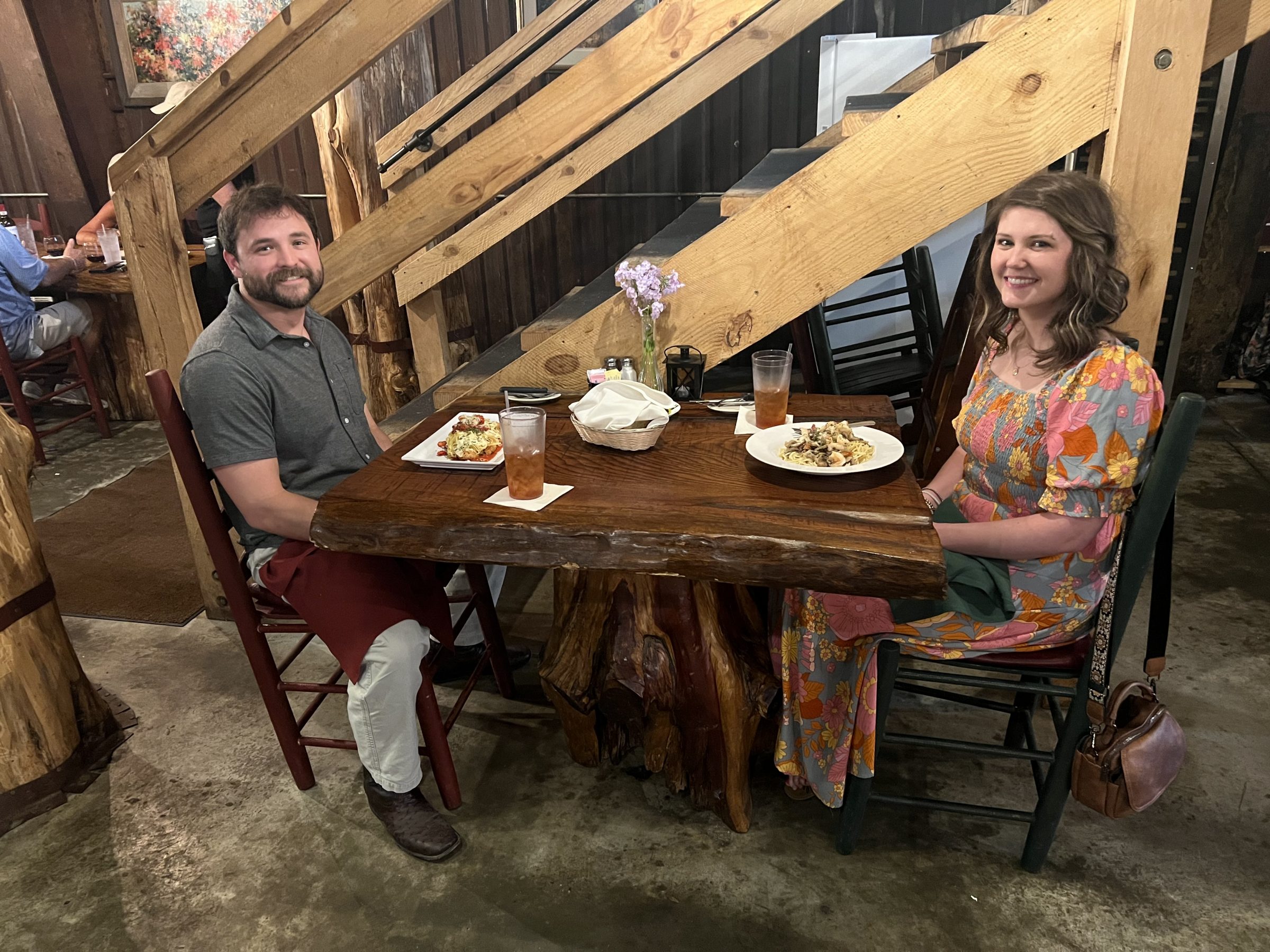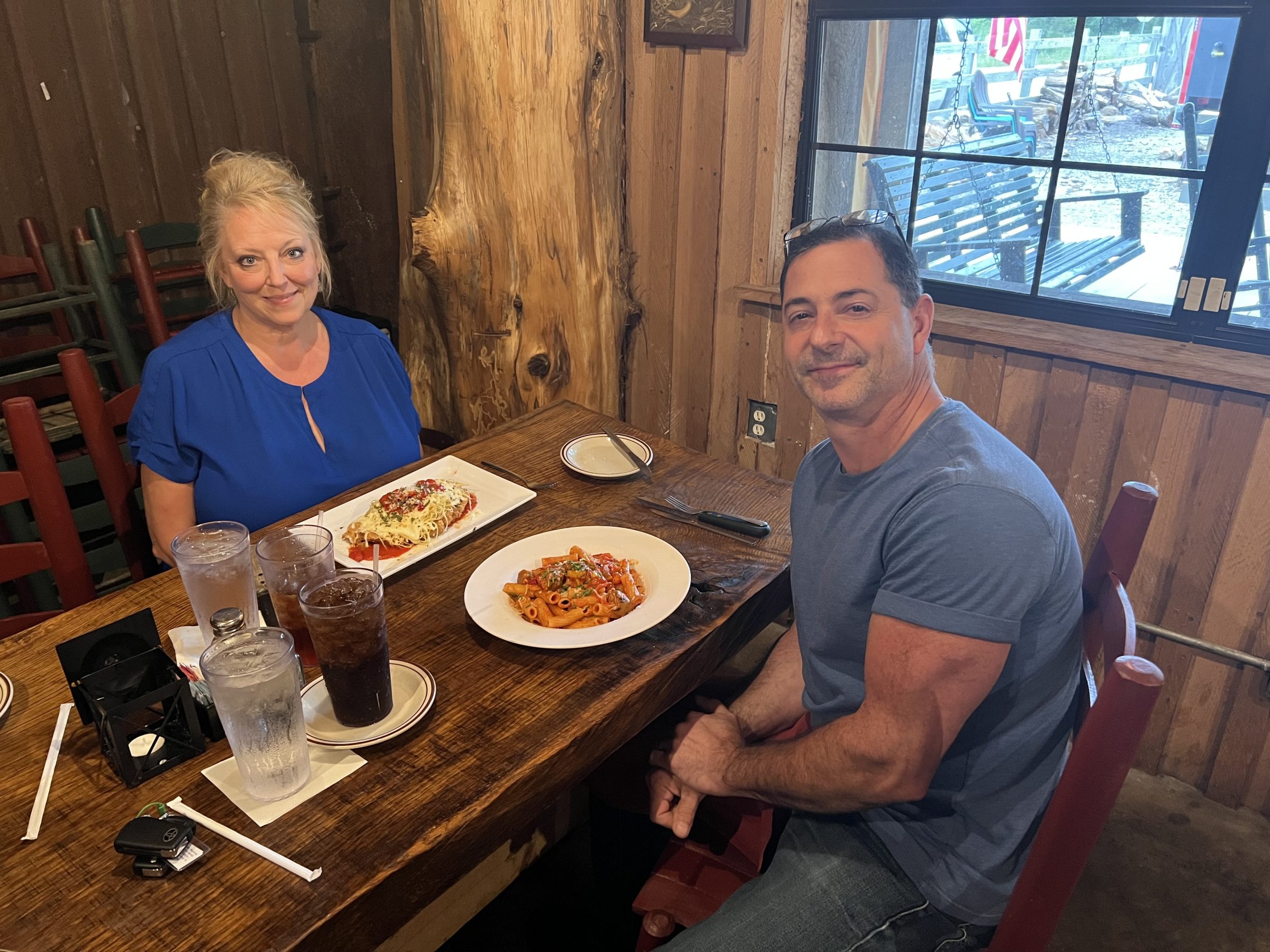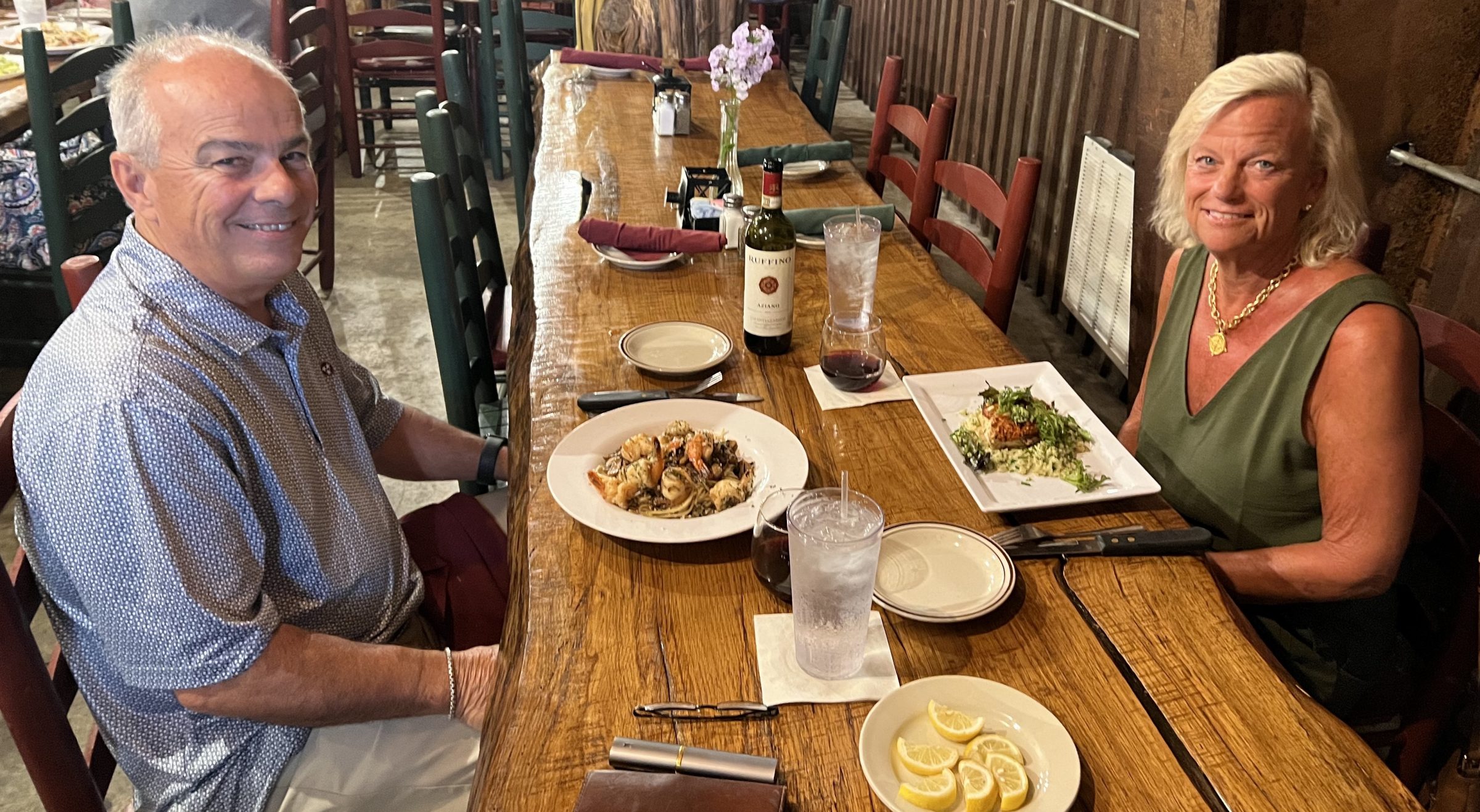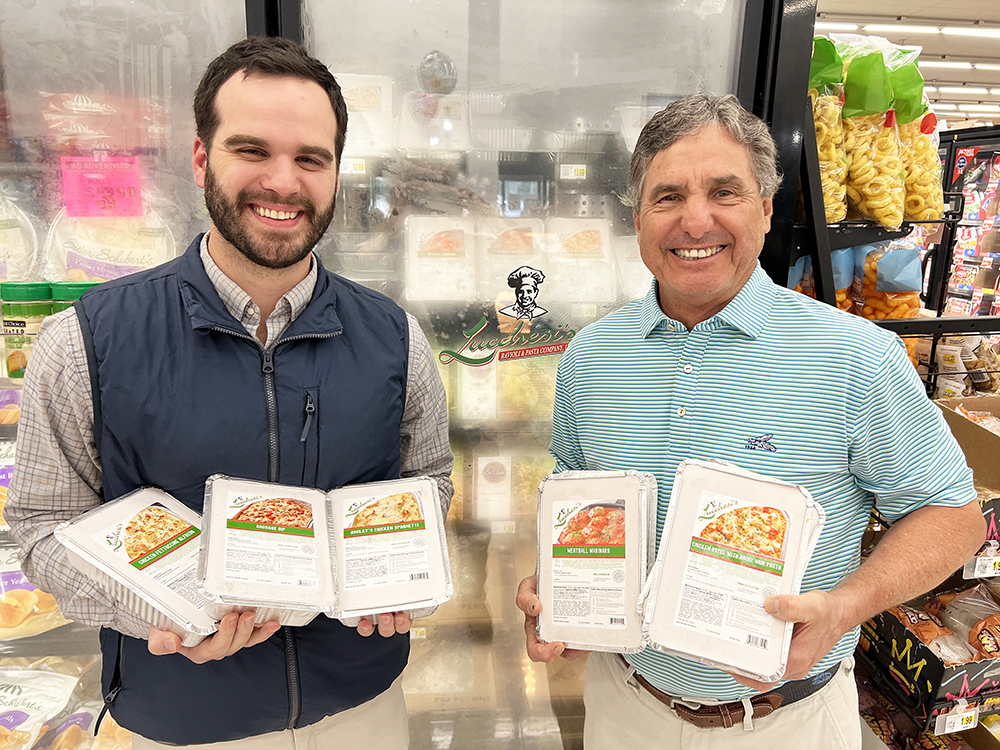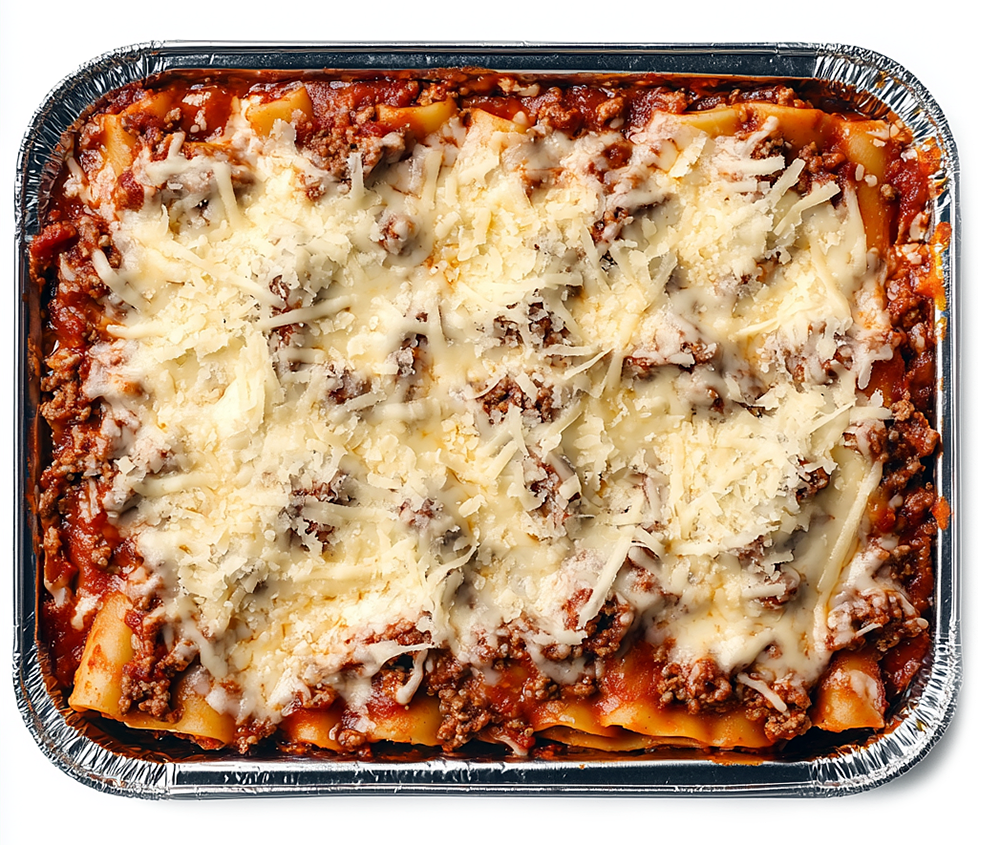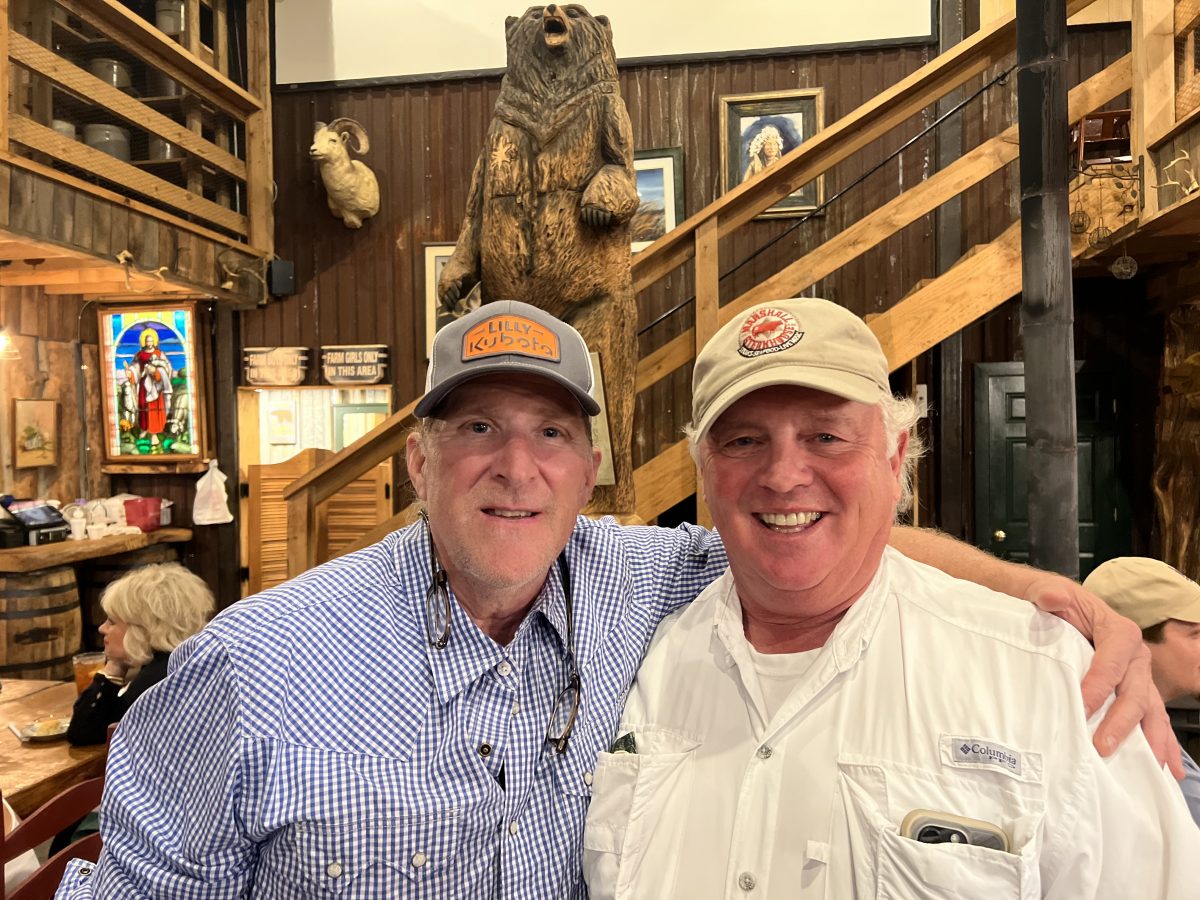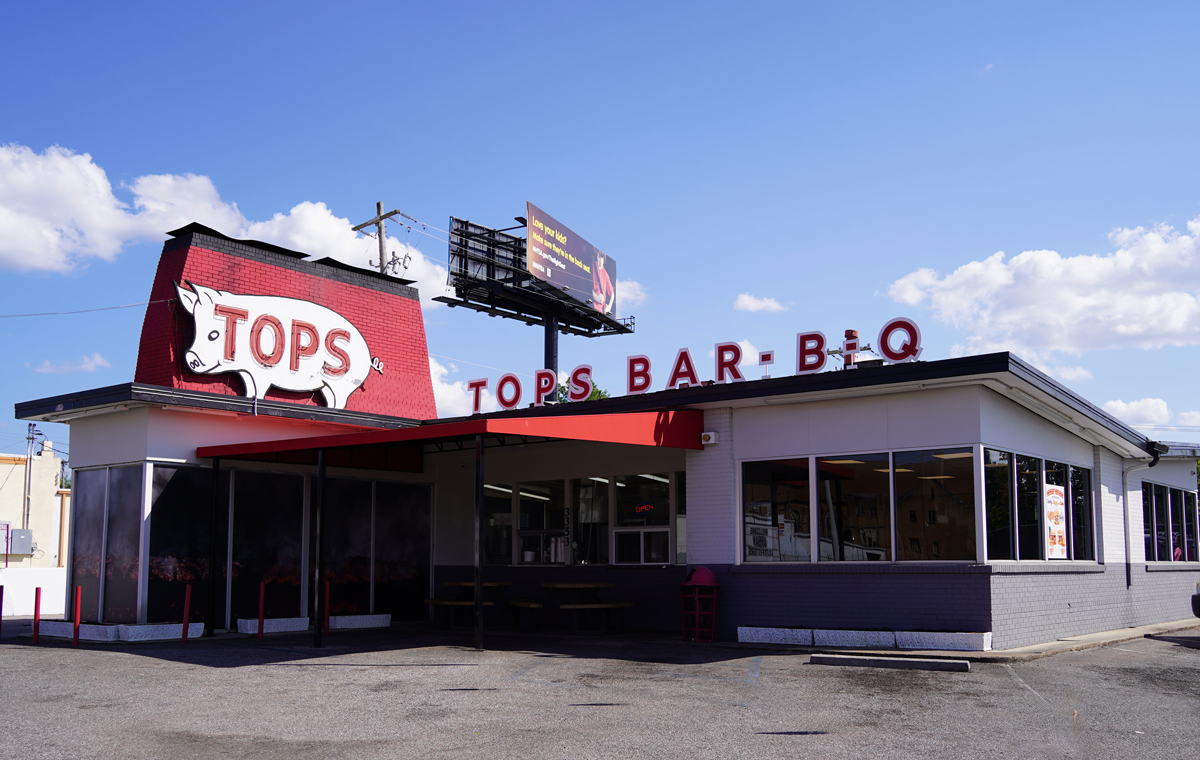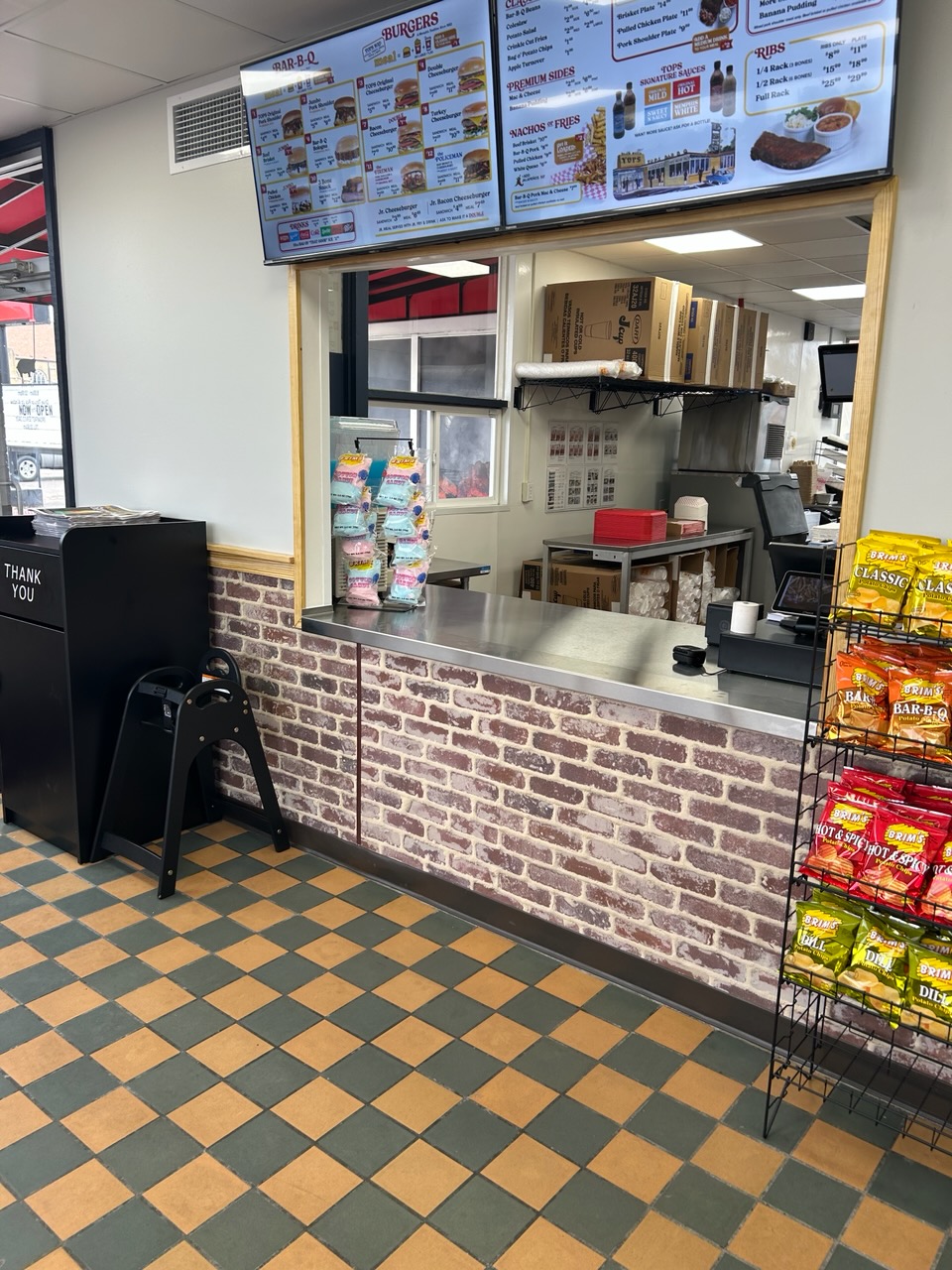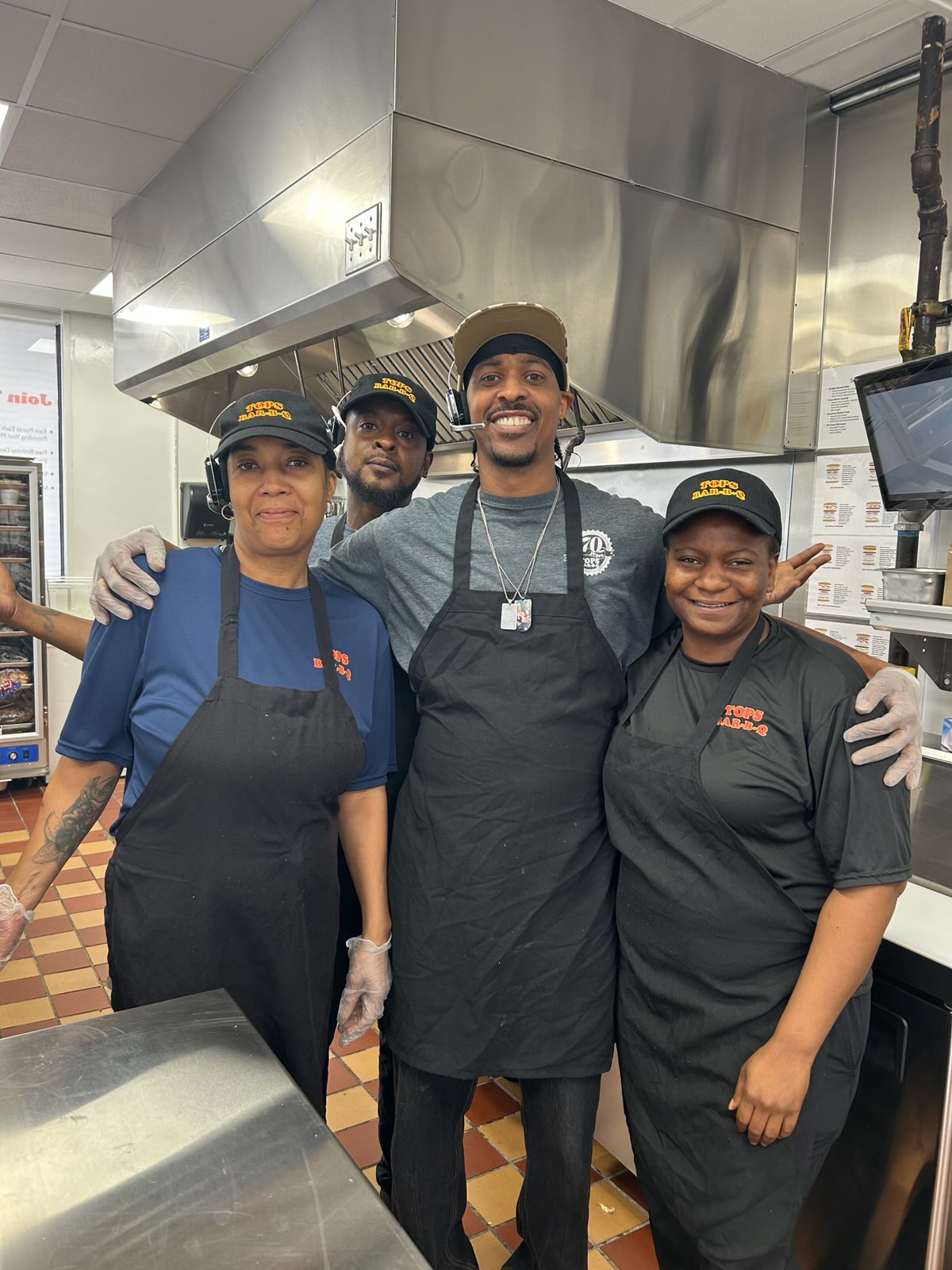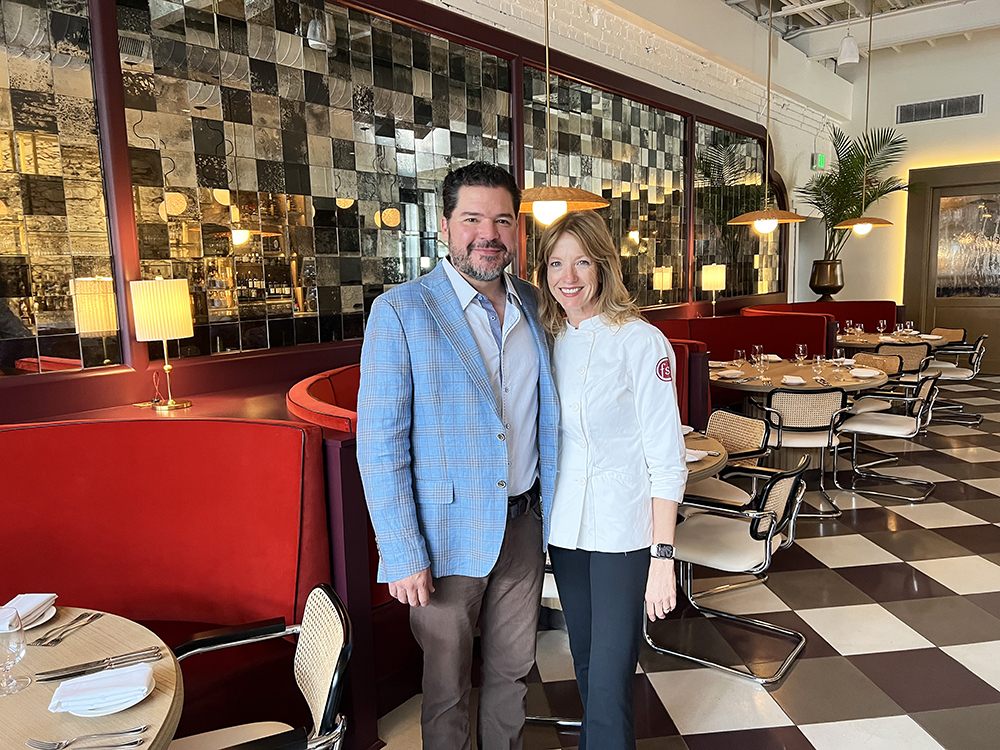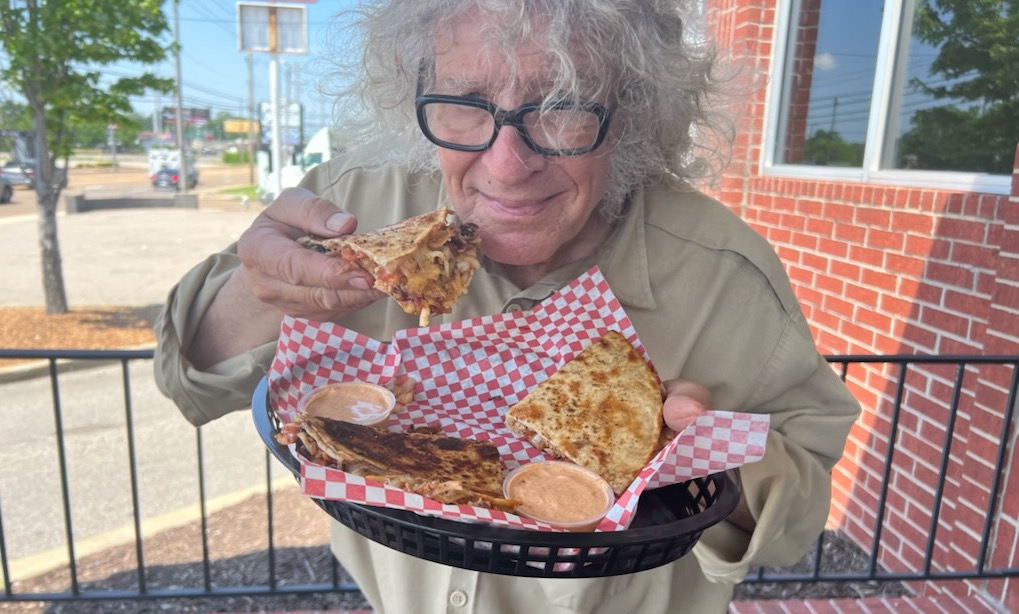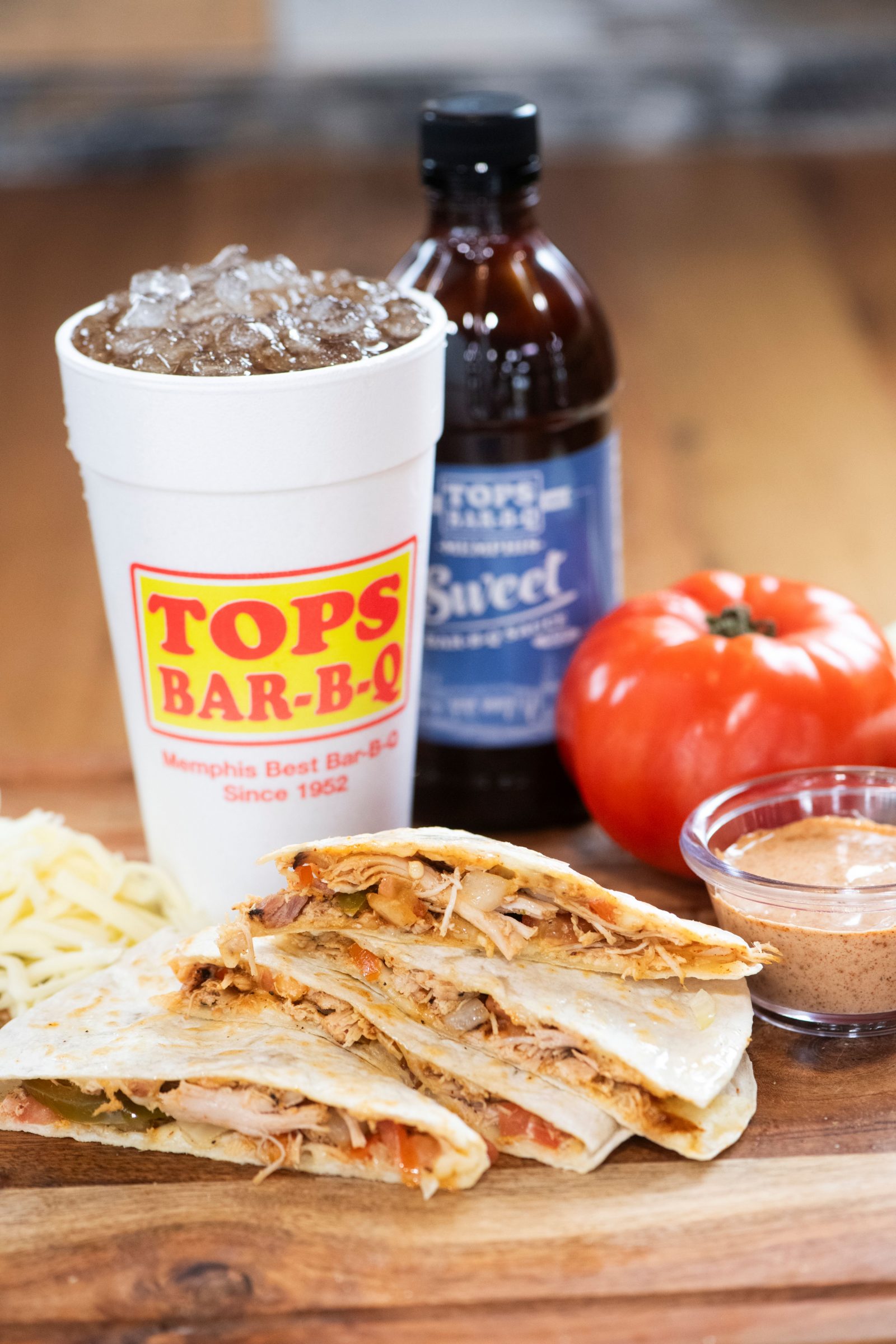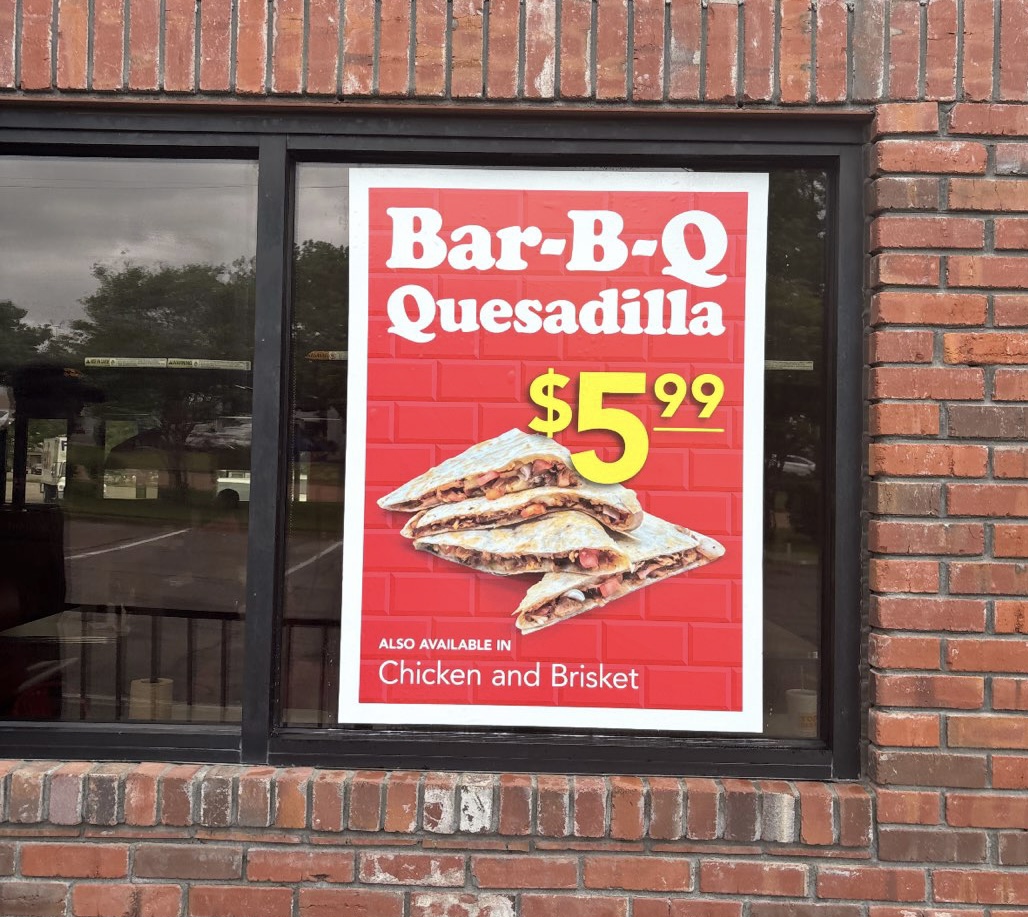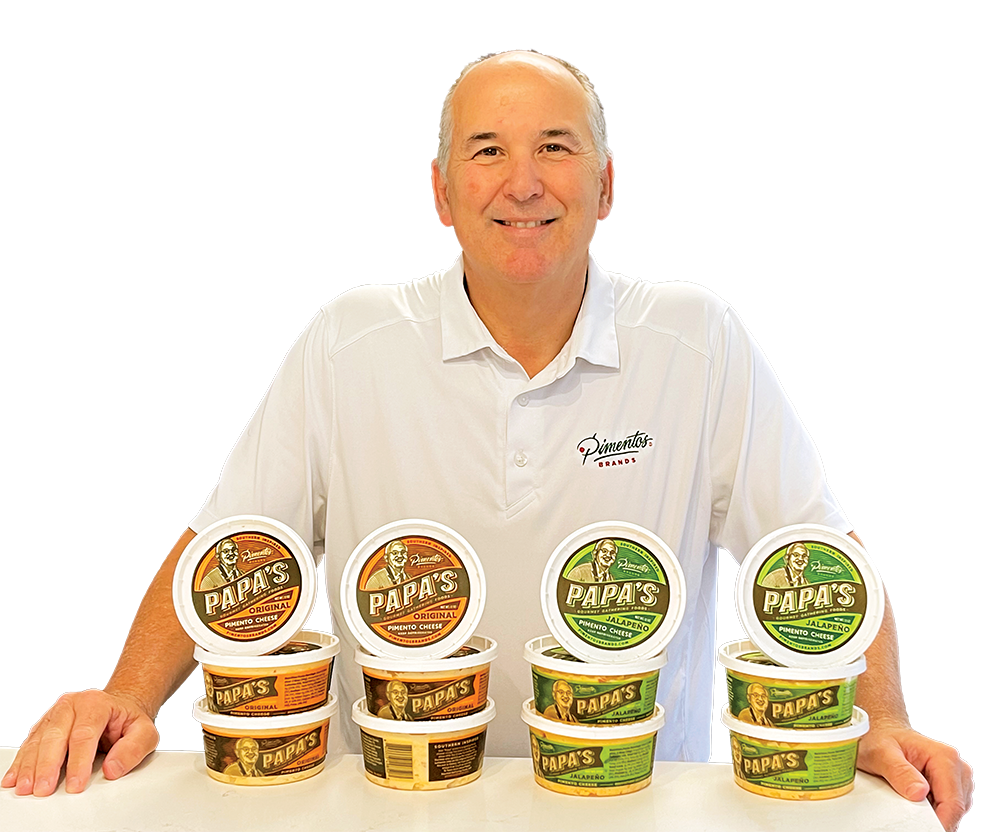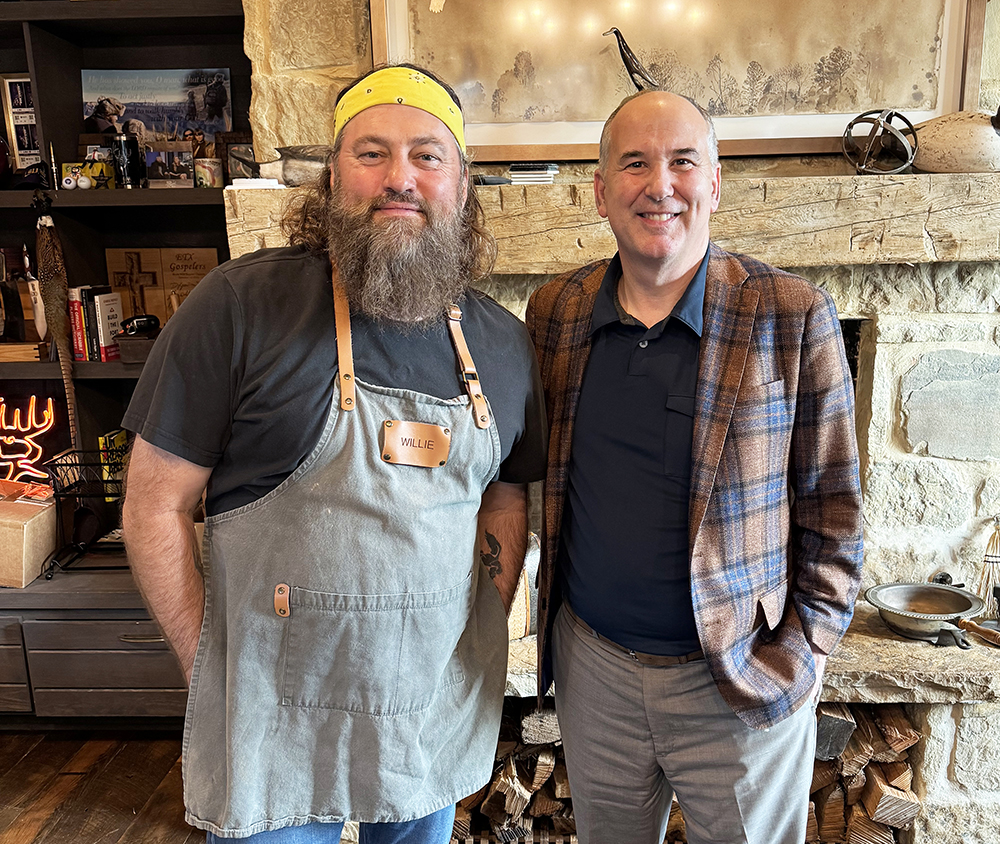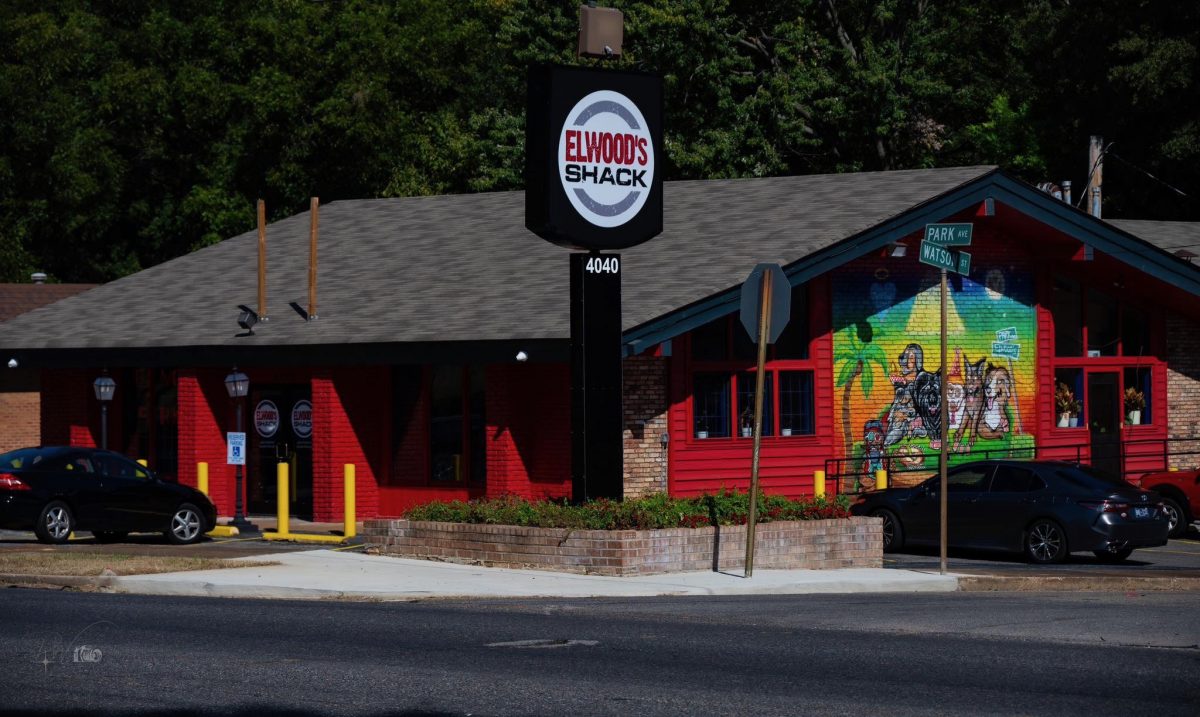Magnolia & May restaurant opened on May 26, 2020. Smack dab during the pandemic lockdown. No vaccine. People were sheltering in place.
She and her husband, executive chef Chip Dunham, got customers, but general manager Amanda Dunham says, “There were times Chip and I would sit on the patio and we would be pretty empty: ‘Why are we doing this?’”
When they opened their restaurant at 718 Mt. Moriah Road, Chip and Amanda did curbside and to-go orders until they were allowed to do 50 percent capacity dine-in service.
Five years later, Magnolia & May, unlike other restaurants that bit the dust, is still open. To honor the occasion, Chip and Amanda are holding a five-day anniversary celebration at the restaurant.
“It’s just kind of something fun to do,” Amanda says, adding, “Five years isn’t super long, but it feels long to us sometimes.”
During those lockdown days, their Magnolia Farms Box was a hot item. It included the recipes for a meal and a cocktail as well as the ingredients, so people could whip up a Magnolia & May meal and drink at home.
The cocktail was a Magnolia & May Manhattan, which included bourbon, dark vermouth, and amaro.
It wasn’t easy operating a new restaurant in those days. “We joke we never got to what we call the ‘romance phase’ when everybody flocks to see what’s going on on,” Amanda says. “By the time we got back to normal, we were already around about a year.”
Chip began his culinary career as a pantry cook, making cold salads and appetizers at The Grove Grill, which was owned by his dad, chef Jeffrey Dunham. He met Amanda while he was going to school at The Culinary Institute of America at Hyde Park, New York. He worked at Slightly North of Broad Restaurant, Butcher & Bee, and The Glass Onion in Charleston, South Carolina, before he moved back to Memphis with Amanda.
His father and mother, Tracey Dunham, were thinking about adding a second location of The Grove Grill, so they decided to convert his grandfather’s insurance company into a restaurant, which became Magnolia & May. The Grove Grill closed in March 2020, and Chip and Amanda along with Chip’s parents, opened Magnolia & May about two months later.
Explaining why they opened when they did, Chip said in a 2022 Memphis Flyer interview, “We were ready to go and our employees were ready to go. There was no sense in waiting anymore.”
They began planning their Five Days of Magnolia & May about two months ago, Chip says.
Wednesday, May 21st, will feature a $5 cocktail. Children can eat off the kid’s menu for $5. The cocktail will be the Barely Making It, a play on the Magnolia & May Manhattan. “We are partnering with Old Dominick to create a fifth-anniversary bottle of Tennessee whisky,” Chip says. Children can get burgers, chicken tenders, and hot dogs along with an ice pop. Today, that would cost $12.
On Thursday, May 22nd, Chip says, “We’ll take a trip down memory lane by bringing back our 2020 menu prices.” Instead of today’s price of $17, people will be able to get a hamburger for $13. They can get the restaurant’s popular shrimp and grits for $23 instead of $28.
Friday, May 23rd will feature live music on the patio. And, Chip says, “On Saturday, we’ll host a brunch featuring Crosstown Brewing [Company], which will be bringing some of its THC seltzers for our guests to sample during the meal.”
The fifth night, May 24th, was going to be a trivia night, but they’re hosting a wedding reception at the restaurant that night, so they’re moving the trivia event to Sunday, June 1st. “It’s just general trivia,” Chip says. “It’s always been something we wanted to do, but we just finally decided to pull the trigger on it. I think we’re going to do it once a month going forward.”
Customers also will be able to get limited edition fifth-anniversary Magnolia & May T-shirts and stickers.
Food wise, over the past five years, they’ve “kind of stayed the same,” Chip says. They describe their concept as “a country brasserie.” As Chip said in the 2022 interview, “We present ourselves in a rustic way, but while we’re a restaurant based in the American South, we don’t want to pigeonhole ourselves as that.”
Influences include Asian and Middle Eastern, but everything is “rooted in that classic French technique.” And now, Chip says, “We actually made more connections with local farms.”
They get chicken and duck from Riley Family Farms in Holly Springs, Mississippi; local beef and pork from Home Place Pastures in Como, Mississippi; mushrooms from Bluff City Fungi in Memphis; and fruit and vegetables from Jones Orchard in Millington, Tennessee.
“When we opened, we wanted to be able to do this,” Amanda says. “We wanted to be using more local farms, more neighborhood purveyors, but we weren’t really able to. Everyone was operating at such an odd time.”
Magnolia & May still offers the same friendly hospitality, Chip says. Amanda visits tables and chats with customers. “The closeness of the community is what we always wanted,” he says.
In short, Chip says, “You can get a very well executed, nutritious chef-driven dish in a casual and approachable environment.”
They achieved one of their goals last year, Amanda adds. “We bought Jeff and Tracey out of the business. Chip and I are the owners.”
A second location of Magnolia & May isn’t on their radar, but they “always joke around” that they might open a coffee shop. “You never know with us,” Amanda says. “It will be where the wind takes us. We’ve always talked about doing a coffee shop.”
That’s on their “bucket list for another five years down the road.”
So, why do they call their restaurant, Magnolia & May? “We have a tradition in my family of, before a baby is born, giving them a nickname,” Chip says. Amanda was pregnant with their daughter, Maddison, whose nickname is Baby Magnolia, and his sister was pregnant with their niece, Marilyn Lamey, who is called Baby May.
“So, now we have to open a restaurant after our son,” Chip says. Their son, Hudson, was born during the past five years. His nickname is Monkey Grass. Which, actually, sounds like a good name for a coffee shop.
